Trees Birds Mammals Fish Amphibians Reptiles
Wild Algarve
Bookshop
Tricholoma terreum (Schaeff.) P. Kumm. - Grey Knight
Phylum: Basidiomycota - Class: Agaricomycetes - Order: Agaricales - Family: Tricholomataceae
Distribution - Taxonomic History - Etymology - Identification - Culinary Notes - Reference Sources
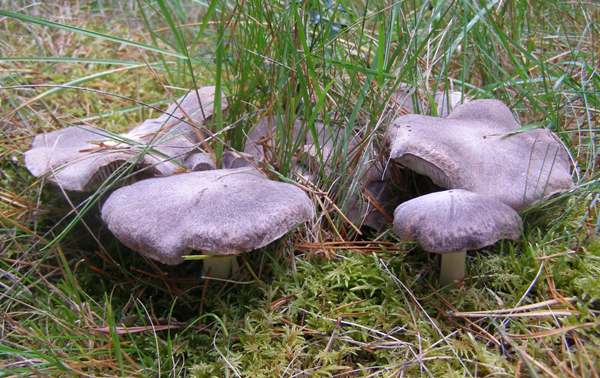
Tricholoma terreum can be confused with several of the many other grey Tricholoma species. Mainly confined to coniferous forests, although occasionally
found under deciduous trees, this largish Tricholoma seems to prefer
calcareous to neutral soil. Rarely solitary, these gregarious mushrooms are often seen in quite sizeable groups.
One of the more common and widespread of the knights, Tricholoma terreum is a rather nondescript member of the genus Tricholoma, which contains far too many unremarkable grey-capped mushrooms! In the BMS list of English names of fungi Grey Knight is the accepted common name of this mushroom.
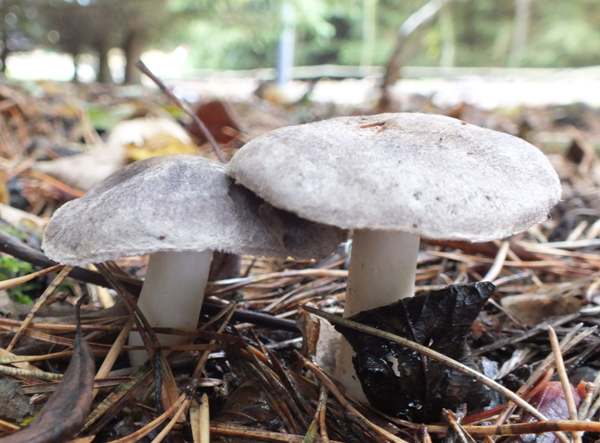
Distribution
Tricholoma terreum seems to be found of the dryish edges of well-used paths through Scots Pine plantations, and so the Caledonian Forest in central Scotland is a particularly good place to go if you want to see plenty of these typical Tricholoma mushrooms. The Grey Knight occurs also throughout most of mainland Europe. Tricholoma terreum is found in Australia, where it is almost certainly an introduced species brought in with pine trees from Europe.
This species (or a very similar Tricholoma) is also reported from North America.
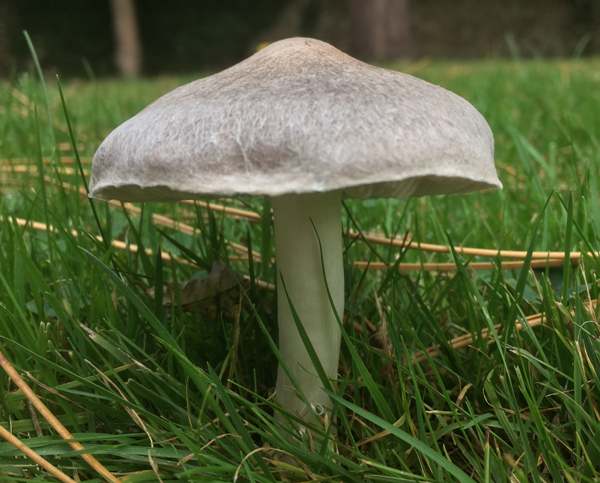
Taxonomic history
When in 1762 he described this species, Jacob Christian Schaeffer called it Agaricus terreus. (In the early days of fungus taxonomy, most of the gilled mushrooms were included initially in the genus Agaricus, but the vast majority have since been relocated in other newer genera to leave on the 'true mushroom' in a more manageable Agaricus genus.) It was the German mycologist Paul Kummer who transferred it to its present genus in 1871, renaming it Tricholoma terreum.
Synonyms of Tricholoma terreum include Agaricus terreus Schaeff., Agaricus myomyces Pers., Gymnopus myomyces (Pers.) Gray, Tricholoma myomyces (Pers.) J. E. Lange, and Tricholoma bisporigerum J. E. Lange.
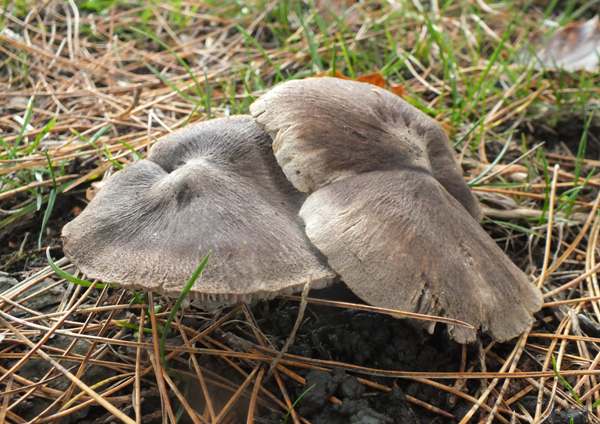
Etymology
Tricholoma was established as a genus by the great Swedish mycologist Elias Magnus Fries. The generic name comes from Greek words meaning 'hairy fringe', and it must be one of the least appropriate mycological genus names, because very few species within this genus have hairy or even shaggily scaly cap margins that would justify the descriptive term.
The specific epithet terreum is Latin and means 'earth' - a reference to the cap colour of this mushroom rather than its growing medium, I assume!
Identification guide
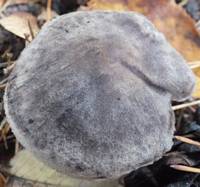 |
±
Cap
Slightly downy to silkily fibrous, the cap of this autumn fungus
is at first conical but eventually almost flat with a slight umbo.
Mouse-grey or grey-brown fibres radiate from the centre of the cap, which
at maturity measures between 3 and 10cm in diameter.
|
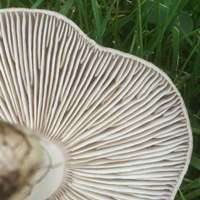 |
Gills
White, turning grey and often tinged with
yellow as the fruitbody ages, the gills are sinuate, broad and
crowded. |
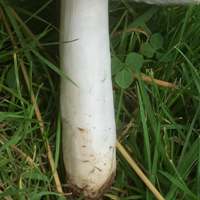 |
Stem
The stems are smooth, white and more or less even in diameter. There is no
stem ring. |
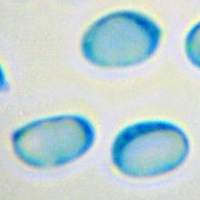 |
Spores
Ellipsoidal, smooth, 6-7 x 3.5-5μm with a hilar appendage; inamyloid.
Spore print
White. |
Odour/taste |
Not distinctive. |
Habitat & Ecological role |
Mycorrhizal with softwood trees, particularly pines,
on rich and often calcareous soils. |
Season |
August to October in Britain and Ireland. |
Similar species |
Tricholoma pardinum (common synonym Tricholoma tigrinum) is a larger mushroom with a mealy odour; it
is known to be slightly poisonous. |
Culinary Notes
Tricholoma
terreum has long been recorded as a good, mild-tasting edible mushroom when properly cooked; however, caution is required for at leastt two reasons. Firstly, it can so easily be confused with other
poisonous grey- or grey-brown species in the same genus, making it dangerous to include any but the most distinctive of of the 'knights' in mushroom dishes... and because Tricholoma species are notoriously variable in appearance we do not include any of them in our mushroom menus. Secondly, Chinese scientists have recently identified in Tricholoma terreum the toxins that cause rhabdomyolysis, a disease that can cause irreparable and sometimes fatal damage to kidneys. We therefore recommend that neither Tricholoma terreum nor its close relative Tricholoma equestre should ever be gathered for eating.
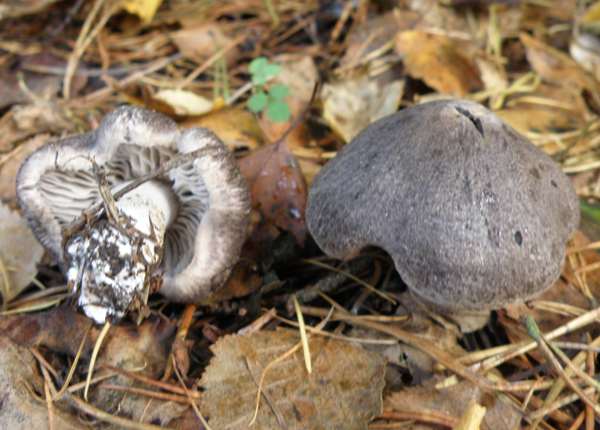
Reference Sources
Fascinated by Fungi, 2nd Edition, Pat O'Reilly 2016, reprinted by Coch-y-bonddu Books in 2022.
X Yin et al, Chemistry, a European Journal, 2014, 20, 7001 (DOI: 10.1002/chem.201400226)
Kibby, G (2013) The Genus Tricholoma in Britain, published by Geoffrey Kibby
BMS List of English Names for Fungi
Dictionary of the Fungi; Paul M. Kirk, Paul F. Cannon, David W. Minter and J. A. Stalpers; CABI, 2008
Taxonomic history and synonym information on these pages is drawn from many sources but in particular from the British Mycological Society's GB Checklist of Fungi.
Acknowledgements
This page includes pictures kindly contributed by Simon Harding.
Top of page...
Fascinated by Fungi. Back by popular demand, Pat O'Reilly's best-selling 450-page hardback book is available now. The latest second edition was republished with a sparkling new cover design in September 2022 by Coch-y-Bonddu Books. Full details and copies are available from the publisher's online bookshop...